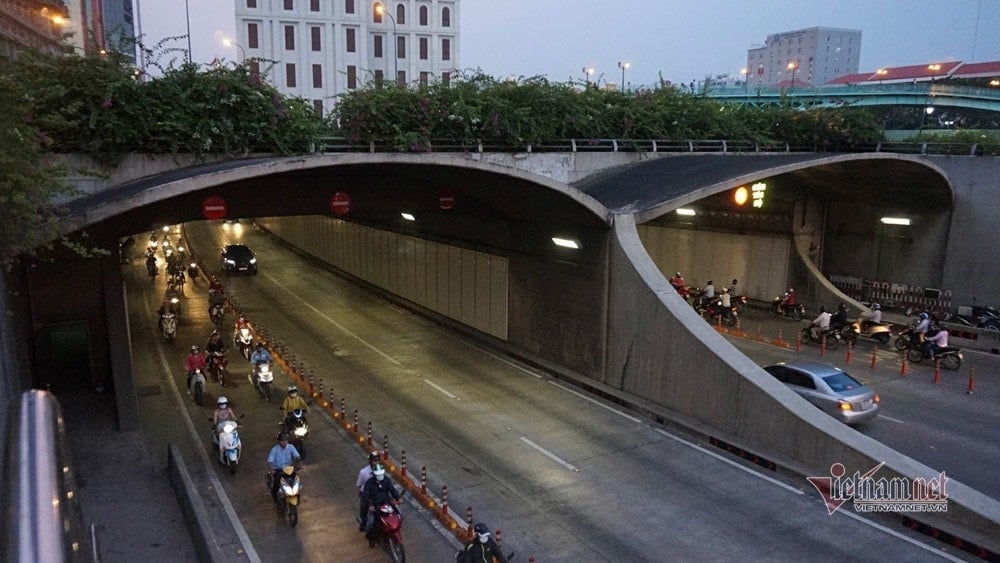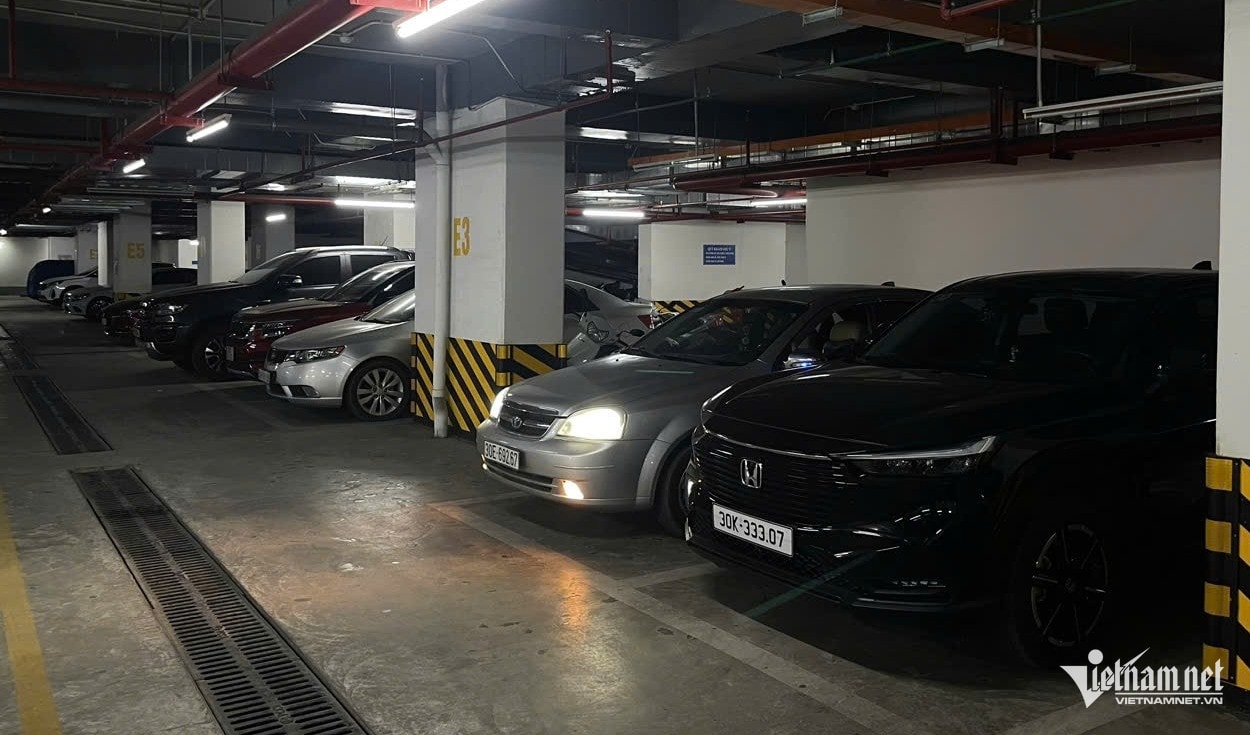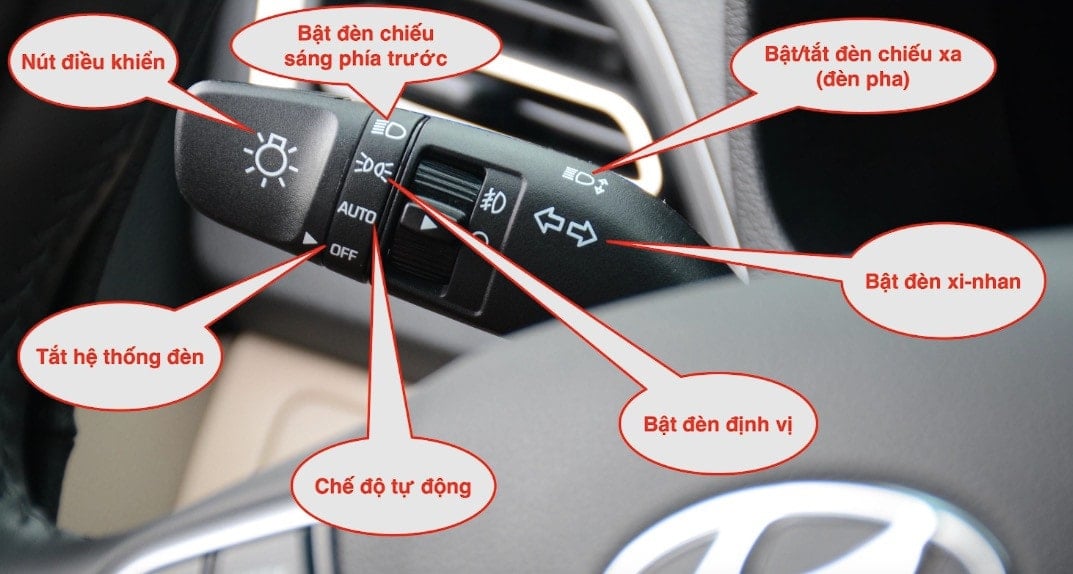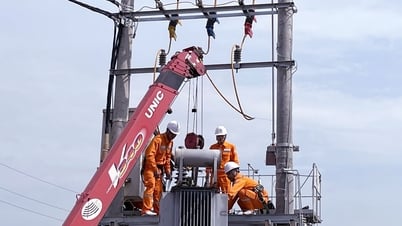Headlights are one of the important and indispensable parts of cars and motorbikes. Not only do they help drivers see better at night or in bad weather conditions, they also contribute to ensuring traffic safety and reducing the risk of accidents.
In particular, when traveling in road tunnels, turning on headlights is a mandatory requirement according to the law. Specifically, Article 26 of the Law on Road Traffic Order and Safety clearly states: “Drivers of motor vehicles and specialized motorbikes must turn on low beams; drivers of rudimentary vehicles must turn on lights or have a luminous object to signal...”.
Compliance with this regulation not only helps drivers see more clearly but also helps other vehicles easily identify, contributing to ensuring safety for everyone when traveling in narrow and poorly lit spaces such as road tunnels.
Turning on headlights in low beam mode is a mandatory regulation when entering a road tunnel. Photo of Thu Thiem Tunnel - Ho Chi Minh City.
According to Clause 3, Article 6, Decree 168/2024/ND-CP, car drivers will be fined from 800,000 to 1 million VND when driving in road tunnels without using low beam lights.
Thus, when driving in a tunnel, if a driver does not turn on the low beams, he or she can be fined up to 1 million VND. However, many people still consider turning on the lights only to avoid being fined by the traffic police, without fully realizing the true importance of this action.
According to traffic experts, turning on the lights properly is a key factor in ensuring safety for yourself and those around you. Not only in road tunnels, but also in areas with low light such as apartment parking garages, shopping malls, etc., turning on the lights helps increase visibility, while making your vehicle easier to identify, thereby effectively reducing the risk of collision.
When entering a tunnel, the sudden change in lighting conditions makes it difficult for the human eye to adapt. Without lights on, vehicles will have difficulty recognizing each other in dark spaces with little direct light, which can easily lead to collisions, especially when moving at high speed in long tunnels or through sharp turns in parking garages.
In addition, tunnels often have narrow spaces, limited visibility, along with dust and smoke, and lighting systems are not always adequate. Vehicle lights, especially headlights and position lights, help vehicles easily identify each other's positions, thereby maintaining a safe distance. Turning on lights is not only to "see the road" but also to "be seen" - an important principle in traffic.
Turning on the lights in the tunnel is not only to “see the way”, but also to “be seen”. Photo: Hoang Hiep
In addition, in some apartment building parking garages, due to the design of the terrain with slopes or curves, the driver's vision may be limited. When the vehicle moves up or down the slope without turning on the lights, the risk of collision with oncoming vehicles will be very high. Many accidents in parking garages originate from vehicles moving in the dark without any lighting signals.
Furthermore, when moving in a tunnel, using a horn to warn is often ineffective because the sound from the horn bounces back in a narrow space. Many tunnels even prohibit drivers from honking.
In this case, light becomes the main means of communication between vehicles. A car turning on its lights remotely helps other drivers to promptly recognize and prepare, proactively handling the situation.
Drivers need to know the light switch on their car. Illustration: Otohui
Therefore, turning on lights when entering a tunnel is not only a regulation, but also demonstrates civilized traffic participation and responsibility for the safety of oneself and the community.
In the context of increasingly developing urban areas with many complex road tunnels and parking garages, forming the habit of turning on lights when entering tunnels becomes an essential factor to minimize accidents and ensure safety for everyone.
AD Advertisement
Source: https://baonghean.vn/vi-sao-can-phai-bat-den-xe-khi-di-trong-ham-10296110.html





![[Photo] A delegation of 100 journalists from the Vietnam Journalists Association visits the soldiers and people of Truong Sa island district.](https://vphoto.vietnam.vn/thumb/1200x675/vietnam/resource/IMAGE/2025/5/30/0984a986227d4e988177f560d2e1563e)
![[Photo] National Conference "100 years of Vietnamese Revolutionary Press accompanying the glorious cause of the Party and the nation"](https://vphoto.vietnam.vn/thumb/1200x675/vietnam/resource/IMAGE/2025/5/30/1cf6cd5c8a934ebfa347028dcb08358c)

![[Photo] General Secretary To Lam receives Chief of the Central Office of the Lao People's Revolutionary Party](https://vphoto.vietnam.vn/thumb/1200x675/vietnam/resource/IMAGE/2025/5/30/140435f4b39d4599a3d17975dfb444c5)
![[Photo] Journalists moved to tears at the Memorial Service for the soldiers who died in Gac Ma](https://vphoto.vietnam.vn/thumb/1200x675/vietnam/resource/IMAGE/2025/5/30/9454613a55c54c16bf8c0efa51883456)




















![[Infographics] From July 1, 2025, what additional benefits will you get if you participate in Health Insurance continuously for 5 years or more?](https://vphoto.vietnam.vn/thumb/402x226/vietnam/resource/IMAGE/2025/5/30/24c62c1508c24655ac4be4735580a9e7)
































































Comment (0)